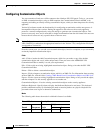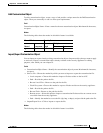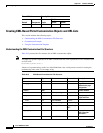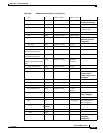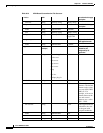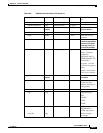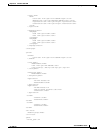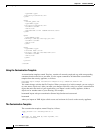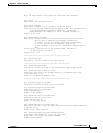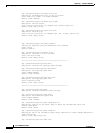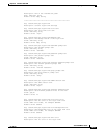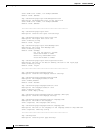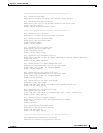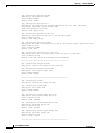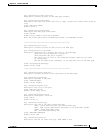
38-50
Cisco ASDM User Guide
OL-16647-01
Chapter 38 Clientless SSL VPN
Configuring Smart Tunnel Access
<type>RSS</type>
<url>rss.xyz.com?id=78</url>
</pane>
<pane>
<id>text_pane</id>
<type>TEXT</type>
<url>rss.xyz.com?id=78</url>
<column>1</column>
<row>0</row>
<text>Welcome to XYZ WebVPN Service</text>
</pane>
<pane>
<type>IMAGE</type>
<url>http://www.xyz.com/logo.gif</url>
<column>1</column>
<row>2</row>
</pane>
<pane>
<type>HTML</type>
<title>XYZ news</title>
<url>http://www.xyz.com/news.html</url>
<column>1</column>
<row>3</row>
</pane>
</portal>
</custom>
Using the Customization Template
A customization template, named Template, contains all currently employed tags with corresponding
comments that describe how to use them. Use the export command to download the customization
template from the security appliance, as follows:
hostname# export webvpn customization Template tftp://webserver/default.xml
hostname#
You cannot change or delete the file Template. When you export it as in this example, you are saving it
to a new name, default.xml. After you make your changes to this file, using it to create a customization
object that meets the needs of your organization, you import it to the security appliance, either as
default.xml or another name of your choosing. For example,
hostname# import webvpn customization General tftp://webserver/custom.xml
hostname#
where you import an XML object called custom.xml and name it General on the security appliance.
The Customization Template
The customization template, named Template, follows.
<?xml version="1.0" encoding="UTF-8" ?>
-
<!--
Copyright (c) 2007,2008 by Cisco Systems, Inc.
All rights reserved.



